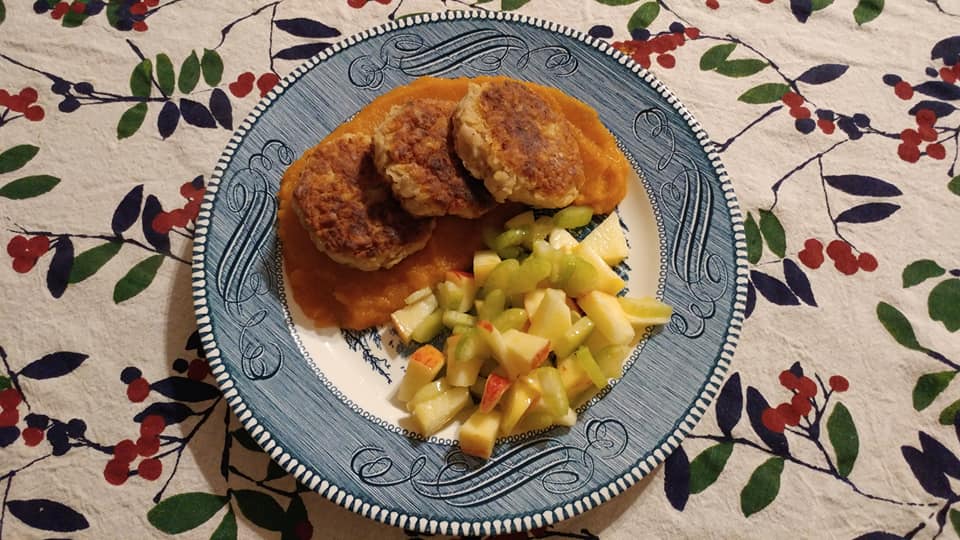|
Inspired by my Patreon patrons (please join us!), I'll be occasionally posting Meatless Monday historic recipes. I ran across a gem of a website with scanned pages of all the recipes from Kitchen Klatter Magazine. The magazine was an outcropping of a radio show by the same name, hosted by Iowa homemaker Leanna Field Driftmier. On the air for sixty-one years, Kitchen Klatter is thought to be the longest-running show of its kind in the U.S. Anyone interested in doing some research on Driftmier can find her papers as well as cookbooks and other materials at the University of Iowa Library. I have an interest in homemaker radio shows, but my World War I research isn't quite ready to let go of me just yet, so more in-depth research is on the horizon. Sadly, it doesn't seem as though the Kitchen Klatter radio program survived, although I could be wrong. Few, if any of them, have been digitized. Although oral history collections and historic film are often preserved through digitization, historic radio is more neglected, particularly homemaker shows. At any rate, this particular recipe page (listed above) is from 1944, toward the end of the Second World War. In my opinion, cottage cheese is completely under appreciated in modern American cooking, which is why I always enjoy finding historic recipes for it. High in protein and generally low in fat, it is creamy and delicious. Cottage cheese, and its siblings ricotta and farmer cheese, are well-used in many European cuisines, particularly in Eastern Europe. RECIPE: Cottage Cheese Sausage1 cup cottage cheese, drained dry Note that the recipe calls for "cottage cheese, drained dry." Cottage cheese naturally has creamy whey in it, but for this recipe you need to drain the whey off or use farmer cheese, which is simply cottage cheese that already has the whey drained off. To drain, line a sieve with cheesecloth or a coffee filter, place it in a bowl to catch the whey, and add the cottage cheese. Cover and refrigerate for several hours or overnight. Before using, squeeze out any additional whey. Frying "sausages" like this will require a fair amount of oil - preheat a pan (I prefer a cast iron skillet) and cover the bottom with enough oil to run when the pan is tipped. Or, add even more to shallow fat fry the sausages. Serve with mashed or roasted root vegetables and a green vegetable, or, for a more breakfast sausage treatment, serve with pancakes, french toast, or fried eggs. BONUS RECIPE: White Bean "Sausage" CakesAs a bonus for the vegans out there, I made up a similar recipe last year using canned cannellini beans and oatmeal. Here's an approximation of the recipe (I make it differently every time). 1 can cannellini beans, drained (save the liquid) There are lots of "mock sausage" recipes that have been around since very early in American history. The sage is the primary suggestion of sausage, so don't leave it out, unless you prefer herbed white bean cakes to mock sausage. Now that the colder weather is back with us, I think I may just attempt the cottage cheese recipe. Do you have any historic vegetarian recipes to share? What have you been cooking lately? If you enjoyed this installment of #MeatlessMondays, consider becoming a Food Historian patron on Patreon! Members get access to patrons-only content, to vote for new blog post and podcast topics, get access to my food library, research advice, and more!
2 Comments
Anna Katharine
10/8/2019 01:17:21 pm
The cottage cheese mock sausage reminds me of a type of cheese croquette that my Dutch friend raves about. They're basically a soft cheese filling rolled in crumbs, fried to golden brown, and served on a long bun like a hotdog. I forgot what they're called, but he says they're a popular snack food in the Netherlands. Maybe they're just cheese kroketten?
Reply
10/8/2019 01:27:10 pm
Fascinating, Anna! I had never heard of those. They sound like the Dutch answer to fried mozzarella sticks! Lol. But yes croquettes are a delicious way to use up extras. I did run across this recipe, which sounds similar but not quite the same thing - https://www.manusmenu.com/cheese-bitterballen?cn-reloaded=1
Reply
Your comment will be posted after it is approved.
Leave a Reply. |
AuthorSarah Wassberg Johnson has an MA in Public History from the University at Albany and studies early 20th century food history. Archives
July 2024
Categories
All
|



 RSS Feed
RSS Feed